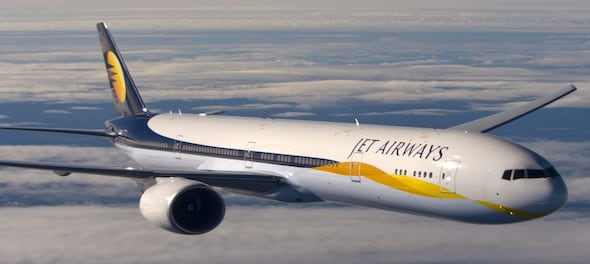
Jet Airways, full-services carrier — RIP! Say hello to Jet Airways, India’s newest low-cost carrier (LCC).
Jet has long prided itself as a full-service carrier (FSC), the type of airline that is known for business class seats, plush lounges, seats with ample legroom, frequent flyer miles, in-flight entertainment and tickets inclusive of meals. In short, a travel experience radically different — frequent flyers would say less dour — from its no-frills competitors, which do not feature of any of the above-mentioned facilities in their operations.
But now the airline is embracing the very business model that its no-frills rivals thrive on. It is withdrawing on-board perks and ditching extras such as on board meals that were inclusive of ticket prices.
Jet will stop providing free meals to most domestic economy class passengers from January as it tries to slash costs and bump up revenues. Passengers will, instead, have the option to buy meals on board, the airline said in a statement on Monday.
The move reflects the fast-evolving nature of Indian aviation, where an increasing number of guests want the freedom and flexibility to make their own travel choices, according to Jet.
That is PR spin. Truth is Jet did not have a choice.
Struggling To Stay Aloft
Jet owes money to vendors and employees and is struggling to stay aloft. It is scrambling to raise funds by shedding equity and selling a stake in its loyalty programme.
Jet was also forced to cut flights on some routes, especially the Gulf market. It is increasing frequencies on others to boost revenues.
Adopting tactics of low-cost airlines is another desperate attempt to stay alive until a buyer comes calling.
The Indian market is dominated by LCCs such as Interglobe Aviation Ltd’s IndiGo and SpiceJet Ltd. As FSCs such as Jet and Vistara have found to their dismay, LCCs often match their own ticket prices and even charge passengers higher on several routes.
But FSCs suffer a huge cost disadvantage because they run fancier operations compared with LCCs. Selling tickets at a premium in accordance with their costlier operations is not the answer because Indians are notoriously price conscious.
It is a terrible dilemma for an FSC: the inability to compete on prices or raise ticket costs by offering superior services. India is also one of the toughest markets in the world because of a thicket of regulations.
The Oddities Of The Indian Market
Vistara, a joint venture between Tata Group and Singapore Airlines, realised these peculiarities of the Indian market after some hand wringing. The airline reconfigured its planes, little more than a year after its launched operations. Result: fewer business and premium economy seats and more economy class seats.
In August, Vistara added a new economy-lite fare class. This fare excludes a complimentary meal and has a smaller baggage allowance.
Vistara’s lite fares are being offered mostly on smaller routes rather than busy ones such as New Delhi-Mumbai. This tactic is aimed at coaxing price conscious customers into trying a premium product.
Jet has borrowed Vistara’s entire rulebook. The airline has five categories of economy fares with different levels of benefits.
Jet had already started phasing out free meals on the two lowest categories of economy fares. And it will now stop providing meals for two more categories from January 7, according to the statement. It has kept business class passengers in India and international flights out of these changes.
Jet has also revised its lounge access policy. It has suspended the complimentary lounge access for JetPrivilege Platinum and Gold members travelling in economy. Only First Class or Première guests using the Jet network can enjoy complimentary access to airport lounges. The airline is also cutting back on some lounge services offered through vendors.
Mercifully for Jet passengers, the airline is yet to cram its plane with more seats like LCCs. For example, SpiceJet and Jet fly Boeing 737-800 aircraft. But SpiceJet has 189 seats compared with Jet’s 156 economy and 12 business class seats in this type of aircraft.
Such changes by FSCs like Jet and Vistara were inevitable, especially in a difficult market like aviation in which profit margins are as thin as boarding passes.
Global Playbook
Many aviation analysts would argue that Jet would have saved itself planeloads of trouble if it had been quicker to tweak its business model. But Jet promoter Naresh Goyal is said to have been resistant to the changes because he feared they would have diluted the brand.
Already, FSCs globally are hardly indistinguishable from their LCC rivals in terms of fares and service, according to KPMG, a consultancy. The cost difference between these airlines has been blurring sharply because FSCs have forsaken traditional differentiators such as free luggage and on-board meals, especially on short-haul flights, the KPMG research that was published a few years ago concluded.
India is no different. On domestic routes, Indians are not suckers for service.
Affordable prices? Oh yes!
The cost-cuts will no doubt help Jet in the short term. But can it compete with LCCs solely on price?
Only time will tell.
(With inputs from Reuters)
First Published: Dec 4, 2018 4:40 PM IST
Check out our in-depth Market Coverage, Business News & get real-time Stock Market Updates on CNBC-TV18. Also, Watch our channels CNBC-TV18, CNBC Awaaz and CNBC Bajar Live on-the-go!


Gonda Lok Sabha election: BJP's Kirti Vardhan Singh takes on Beni Prasad Verma's granddaughter Shreya
May 19, 2024 10:19 PM
Faizabad Lok Sabha election: Can Ayodhya Ram Temple strengthen BJP's stronghold here?
May 19, 2024 10:16 PM
Amethi Lok Sabha election: Can BJP's Smriti Irani retain the Congress bastion she won in 2019?
May 19, 2024 10:12 PM
Rae Bareli Lok Sabha Election: Can Rahul hold on to this Gandhi family bastion?
May 19, 2024 10:09 PM

